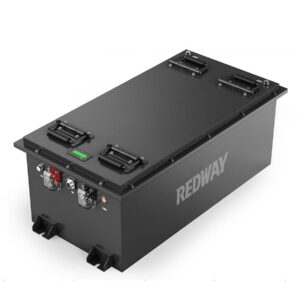
How Can You Extend Your Golf Cart Battery Lifespan?
Golf cart battery lifespan can be extended through proper charging habits, regular maintenance, and avoiding deep discharges. Use a quality charger, check water levels monthly, and store batteries in a cool, dry place. Lithium-ion batteries often outlast lead-acid alternatives. Temperature control and avoiding overloading the cart also play critical roles. Experts recommend cleaning terminals and performing equalization charges periodically.
What determines golf cart battery lifespan?
How Does Proper Charging Prolong Golf Cart Battery Life?

Proper charging prevents sulfation in lead-acid batteries and reduces stress on lithium-ion cells. Always charge after use, avoid partial charges, and use a smart charger with automatic shutoff. Overcharging degrades plates, while undercharging causes stratification. For optimal results, charge at room temperature and follow manufacturer voltage guidelines. Equalization charges every 2-3 months balance cell voltages in flooded lead-acid batteries.
Advanced charging systems now incorporate pulse technology to break down sulfate crystals that form during discharge cycles. Golf cart owners should consider investing in chargers with temperature compensation – these adjust voltage based on ambient conditions to prevent overheating. For lithium batteries, partial state-of-charge (PSOC) cycling is acceptable, unlike lead-acid which requires full recharges. A study by Battery University shows proper charging can extend cycle life by 38%:
| Charging Practice | Cycle Life |
|---|---|
| Full discharge/recharge | 500 cycles |
| 50% depth of discharge | 1,500 cycles |
| 25% depth of discharge | 3,000 cycles |
Implementing timed charging sessions rather than leaving batteries connected indefinitely prevents electrolyte evaporation. Smartphone apps connected to modern chargers allow users to monitor progress and receive completion alerts.
How Does Storage Temperature Affect Battery Health?
Ideal storage temperatures range between 50°F–80°F. Cold temperatures reduce capacity and increase internal resistance, while heat accelerates chemical degradation. Store batteries at 50% charge in climate-controlled environments. Disconnect terminals to prevent parasitic drains. For winter storage, charge monthly to prevent freezing in lead-acid batteries. Lithium batteries tolerate wider temperature ranges but lose capacity faster above 95°F.
Temperature extremes create permanent capacity loss through several mechanisms. In cold environments, electrolyte viscosity increases, slowing chemical reactions and reducing available power. Prolonged heat exposure (above 100°F) accelerates grid corrosion in lead-acid batteries by 200% according to IEEE research. Storage solutions should include:
- Insulated battery compartments
- Ventilation systems for heat dissipation
- Thermal blankets in freezing climates
Battery manufacturers specify derating factors – for every 15°F above 77°F, expected lifespan decreases by 50%. Golf cart owners in extreme climates should consider lithium batteries which maintain 85% capacity at -4°F versus lead-acid’s 40% output. Always allow batteries to reach ambient temperature before charging after storage.
Why Does Water Level Management Matter for Lead-Acid Batteries?
Water prevents plate exposure and overheating during charging. Low levels increase resistance, causing accelerated wear. Add distilled water after charging, maintaining ¼” above plates. Never refill before charging—expansion during charging could cause overflow. Use only distilled water to avoid mineral buildup. Sealed AGM batteries require no watering but need ventilation to prevent pressure buildup.
Can Battery Monitoring Systems Extend Lifespan?
Advanced monitors track state-of-charge, cycles, and internal resistance. Bluetooth-enabled systems like Trojan Battery TRU provide real-time alerts for low voltage or high temperatures. Historical data helps identify usage patterns that strain batteries. Monitors prevent deep discharges by triggering automatic cutoffs. For fleet carts, cloud-based tracking enables predictive maintenance scheduling based on actual wear metrics.
“Modern battery tech demands proactive management. We’ve seen 40% lifespan increases in carts using IoT monitors paired with adaptive charging algorithms. Hybrid systems combining lead-acid reliability with lithium peak power are emerging. Always prioritize temperature stability—every 15°F above 77°F halves lead-acid life.”— Redway Power Systems Engineer
News
ROYPOW’s New Journey 2025: Leading in Golf Cart Power Solution Innovations
On January 8, 2025, ROYPOW announced its latest advancements in golf cart power solutions. The company introduced upgraded lithium-ion batteries utilizing Cell-to-Pack (CTP) technology, enhancing integration and space efficiency to accommodate more cart models. These batteries boast a 10-year design life, over 3,500 charge cycles, and a 5-year full replacement warranty. Additionally, ROYPOW unveiled a new lineup of electric motors and controllers, featuring lightweight, compact designs with powerful acceleration and extended driving range.
Olelon Energy Unveils 2025 Golf Cart Battery Technology
In March 2025, Olelon Energy introduced its latest series of lithium-ion batteries for golf carts. The lineup includes a 51.2V Integrated Lithium Battery Series with capacities ranging from 105Ah to 210Ah, and a customizable Lithium Battery Module Series with a maximum capacity of 102V and/or 2100Ah. Key advancements feature an advanced Battery Management System (BMS) with app integration for real-time monitoring, fast and wireless charging capabilities, and enhanced safety measures incorporating solid-state battery technology.
Ampace’s E30P Lithium-Ion Cell Debuts at Bharat Battery Show 2025
In January 2025, Ampace revealed its E30P Cell at the Bharat Battery Show. This high-capacity 35205 cylindrical lithium-ion battery incorporates Ampace’s Boost Power (BP) system, enhancing energy density, safety, and thermal stability. The E30P Cell supports fast charging, reaching 95% capacity in 47 minutes, and is designed for applications including electric motorcycles, scooters, and maxi-scooters.
FAQ
- How often should I water lead-acid batteries?
- Check monthly, adding distilled water after charging to maintain ¼” above plates.
- Can I use car battery chargers for golf carts?
- No—golf cart chargers deliver higher amperage (15-30A) with voltage profiles matching deep-cycle needs.
- What indicates battery replacement is needed?
- Runtime drops below 70% of original capacity, visible plate damage, or voltage falling under 48V (48V systems) under load.
